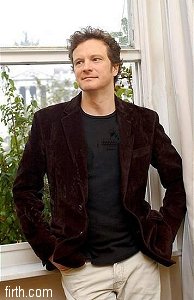| Article
Excerpts
from the Rome Press Conference for La
ragazza con l'orecchino di perla February 19, 2004 |
 |
| Article
Excerpts
from the Rome Press Conference for La
ragazza con l'orecchino di perla February 19, 2004 |
 |
| Io come Vermeer
(Me as Vermeer) by Rosa Esposito for www.cinematografo.it Per
realizzare il film, il regista ha ammesso di essersi ispirato al film
di Jacques Rivette La bella scontrosa (storia dell'ultimo quadro
dipinto da Frenhofer). ''Ci è servito molto per capire cosa
dovevamo evitare per non cadere nei soliti cliché di tanti film
sulla vita di celebri pittori'' spiega. ''E' stato molto più
istruttivo di qualsiasi lezione di pittura'' aggiunge Firth. Per
prepararsi alla parte, l'attore non ha seguito nessun corso, ma ha
studiato a lungo le opere di Vermeer. ''Mi affascinava molto tenere in
mano il pennello, giocare con i colori, ma quello che più mi
premeva era riuscire a cogliere il particolare rapporto che Vermeer
aveva con la luce, il modo in cui riusciva a catturarla e a trasferirla
sulla tela. Volevo che attraverso me il pubblico imparasse a conoscere
questo personaggio ancora avvolto in una fitta aura di mistero''. To make Girl With a Pearl Earring, director Peter Webber has admitted to have taken inspiration from Jacques Rivette's film, La Belle noiseuse [The Beautiful Troublemaker] (the story about Frenhofer's last painting). ''That was very useful to understand what we had to avoid in order not to fall into the usual cliché of so many movies representing famous painters' lives. Says the director. 'It was much more educational than any painting lesson'' adds Firth. To prepare for the role, the actor didn't take any classes but he researched Vermeer's work extensively. ''Holding the brush in my hand and playing with the colours fascinated me, but what I was keener on was to succeed in understanding that special relationship that Vermeer had with the light, how he was able to catch it and convey it onto his canvas. I wanted that through me the audience could learn to know this character who is still shrouded in an aura of mystery." Firth: 'Ho
cercato la luce di Vermeer' (I searched for Vermeer's light) He dressed in the
Shakespearean garb of Lord Wessex for ‘Shakespeare in Love,’ then
played the a turn-of-the-century gentleman in Wilde’s ’'Earnest.' Now
Colin Firth is back in the role of the great Flemish [sic] master
Johannes Vermeer in Girl With a Pearl Earring, starting tomorrow on
Italian screens. The author and screenwriter (Olivia Hetreed adapted the novel for the big screen) created a story of platonic and artistic passion between Vermeer and one of his servants, Griet, who became his muse, causing jealousy and tension inside his household. We met Colin
Firth-Johannes Vermeer in Rome. How did you prepare for the role of Vermeer? What relationship did you have with the
painter? Did you take lessons? |